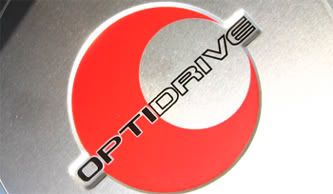teh FAQ wrote:How do the TPS Tec and Venom 400 work?
The TPS Tec and Venom 400 are both electronic 'hacks' that plug into various sensors, and work quite similarly.
The Venom 400 claims to alter closed loop fuel and spark response by replacing or modifying the voltage signals into the Powertrain Control ModuleSee ECM. (PCM) from the manifold absolute pressure (MAP) and throttle position (TPS) sensors. Since the PCM uses input from the MAP and TPS sensors during closed loop operation to determine an appropriate fuel response, their logic behind this attempt is to trick the PCM into thinking that the throttle is open more than it actually is so that additional fuel will be added to the mixture. And since a mixture slightly richer than stoichiometric is generally best for producing peak power, the additional fuel should create some extra power (albeit far from the 25% increase that they claim.)
However, it is important to remember that MAP and TPS inputs only affect PCM decisions during partial throttle driving. Once MAP and TPS signals reach voltage levels that indicate full-throttle, the PCM begins ignoring these input signals and resorts to open loop operation - at which point, additional voltage from MAP and TPS sensors will not affect fuel response. In other words, the Venom 400 claims to function only under partial throttle conditions.
This partial throttle limitation is not something that is denied by the makers of the Venom 400. In fact, they openly admit this in their marketing material. They even used to publish dynamometer testing results at their website that showed power gains as a function of throttle position. If you looked closely, you would notice that the Venom 400 power curve matches the stock power curve at 25% and 100% throttle openings. And, of course, on both curves, the point of maximum power occurs at a 100% throttle opening. But at all partial throttle openings between these points, they indicate a substantial increase in power by using the Venom 400.
Specifically, at 40% throttle opening with the Venom 400, as much power is indicated as was produced at 60% throttle opening on the stock curve. And at 80% throttle opening with the Venom 400, as much power is indicated as at 90% throttle opening on the stock curve. At full throttle (100% throttle opening,) the venom curve matches the stock curve - which makes sense, since the Venom only claims to function during partial throttle operation. What they fail to mention is that the accelerator pedal - which is controlled by the driver with his or her right foot, determines the amount of throttle opening. So by simply pushing harder on the accelerator pedal, you can open the throttle as far as you want - for free. In other words, you do not need to spend money to go faster from a partial throttle position. You need only to open the throttle further until one of two things happens: 1) the car goes as fast as you want or 2) you reach full throttle and cannot push the pedal any further (at which point, the Venom 400 is useless since it only functions during partial throttle operation.)
So our advice is this: if you want your car to produce the power of a 60% throttle opening, just push harder on the accelerator pedal until the throttle is open 60%. And if you want your car to produce the power of a 90% throttle opening, just push harder on the accelerator pedal until the throttle is open 90%. And if you want even more power than that, push the pedal to the floor so that the throttle is open 100%.
This method does not cost anything, yet it accomplishes the same increase in power as Python Injection claims to deliver with the Venom 400.
essentially, if you want to save yourself $300, but get the same effect, push the pedal more.
 JBO Stickers! Get yours today!
JBO Stickers! Get yours today!
interesting....thanks guys!

